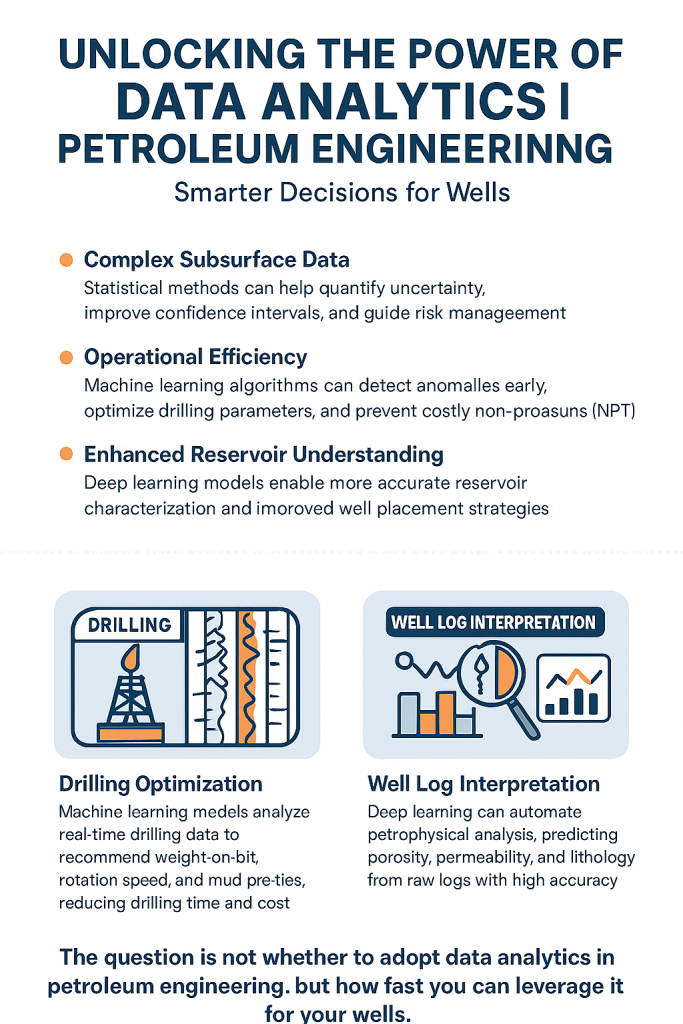The petroleum industry has always been data-intensive. From seismic surveys to well logs, drilling parameters, production data, and reservoir simulations, every stage of the well lifecycle generates massive amounts of information. Traditionally, engineers have relied on deterministic models and domain expertise to interpret these datasets. But as operations grow more complex, conventional methods can no longer keep up with the scale and speed of modern decision-making.
This is where data analytics—spanning statistics, machine learning, and deep learning—steps in as a game changer.
Why Data Analytics Matters for Wells
Predictive Capabilities
From forecasting production decline curves to predicting equipment failures, analytics enables petroleum engineers to make proactive, data-driven decisions.
Key Applications in Petroleum Engineering

- Production Forecasting
Statistical models and ML algorithms enhance decline curve analysis, taking into account nonlinear patterns and secondary recovery methods. - Artificial Lift Optimization
Predictive analytics can fine-tune pump schedules, gas lift injections, and ESP performance for maximum efficiency. - Failure Prediction
Machine learning models trained on historical well data can predict casing wear, stuck pipe events, or equipment failures before they occur.
Bridging Engineering and Data Science
The most impactful solutions arise when petroleum engineers and data scientists collaborate. Engineers bring domain knowledge—rock properties, reservoir behavior, drilling practices—while data scientists contribute advanced analytical techniques. Together, they transform raw data into actionable insights.
The Future of Wells Is Digital
As energy companies strive for efficiency and sustainability, adopting data-driven approaches is no longer optional—it’s essential. Wells of the future will be designed, drilled, and operated with AI-powered analytics at their core.
By embracing statistics, machine learning, and deep learning, petroleum engineers can unlock hidden value in their data, reduce operational risks, and maximize recovery—all while lowering costs.
Too true. Real data is valuable and insightful evidence for action. An interesting read, thankyou.